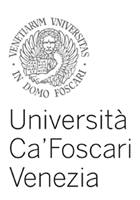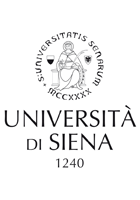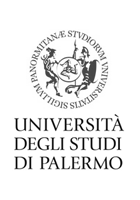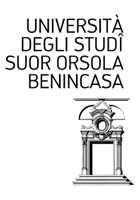User manual
Manuals
Welcome in ALIM2. In this page, you will find the User Manual and the Collaborators Manual, which contains the guidelines for the encoding of the Literary Sources and the Documentary Sources.
User Manual
The ALIM homepage is organised in several sections, which allow users to quickly find what they are looking for, and to be always up-to-date on the new texts uploaded in the website, as well as on all the initiatives related to the ALIM project.
From top to bottom, immediately after the Title, a horizontal bar contains the following entries: The Project; The Spelling of Middle Latin Texts; Browse the Digital Library; Lexicon.
The Project
This section describes the principles that inspired the website, the processes that brought to its realisation, le research units and the collaborators involved, some basic criteria about the selection of texts and all the necessary technical information on the Alim2 software architecture.
The Spelling of Middle Latin Texts
This section contains some basic information about the most frequent changes in spelling found in medieval Latin texts. These changes may have been variously treated in the editions from which the texts in the DL section are taken. Although necessarily synthetic, spelling information is essential for a critical use of the materials available on the website.
Browse the DL
Here, the user can find a list of all the resources available in the database, organised by Authors, Works (including several anonymous texts) and Documentary Sources. By entering one of the sections, the user will have access to the page that allows to search the texts through the following filters: author, title, typology, period of composition, and genre. Here, one can also search within the texts. Different options are available, in particular: advanced word search with the use of jolly characters and Boolean parameters; proximity search for more complex analyses (see under Lexicon). After the text has been chosen, it can be directly browsed on the site, or it can be downloaded in various formats (.txt, .html, .pdf, .xml). In this way, it is possible to create one’s own small corpus of texts to browse offline. However, Alim is not only a database: its potentialities can be best appreciated using the numerous and various search options.
The texts uploaded in Alim fulfill precise and mandatory criteria: absolute fidelity to the source-edition (in order to facilitate both the fruition of the text and the quotation of specific passages in scholarly publications); complete bibliographic reference of the source; special attention devoted to the source-edition by introducing notes that signal the use of diacritical signs and, where certain, obvious typos.
The XML encoding of the texts follows a procedural criterion. For more information about the mark up of semantic elements, and on the encoding in general, see the Manual for Operators below.
Lexicon
For those who want to carry out more detailed linguistic or grammatical analyses, a software called “Lexicon” is available on the website. This is an innovative free-access software (http://www.lexicon.unisi.it/public) for the production of customized textual corpora and their linguistic analysis. “Lexicon” has been developed by Luigi Tessarolo on a project by Francesco Stella, the current coordinator of the Alim research groups. The texts of the DL can be directly searched through Lexicon: by clicking on one of the four options in the drop-down menu (frequencies, comparisons, collocates, concordances), a pop-up window containing all the texts of the DL will appear. You should select the desired text(s) and then click on ‘apply’. The texts can be queried individually or by corpora, according to various options: you can process grammatical tables; find out frequencies, collocates (i.e. the words that recur more often in a text, visualised in their context), clusters (sequences of consecutive words); and, most importantly, you can compare the superimposability rate of the vocabulary of two or more works, authors or corpora. The outputs are always presented in the form of a chart or a graphic – i.e. in forms particularly useful for scholarly publications or PowerPoint presentations.
Library
Under the horizontal bar you will find the Library section. From this section, you can once again access the Project and Collaborators sections (see above), as well as the Manuals and Contacts sections. From here, you can also access the DL (“Entra nella biblioteca”).
Contacts
In this section you will find our contacts for any information, suggestions, or requests. The same contacts can also be used by anyone who owns the rights of texts or images and, for some mistakes, has not been previously contacted by the research groups.
How to access the Library
From here you get access to the page for the text research and interrogation. The same page can be also reached from the section titled Browse the DL. For more details on the possible research options, see above.
Collections
This section allows the user to visualize important collections of texts uploaded in Alim 2. Some of these collections have been created in order to add value to sets of rare texts or to peculiar literary genres; others to highlight new editions, the editiones principes or the first transcriptions promoted by Alim and made available to the users. In the Collections section also thematic paths are suggested, which gather texts of various genres and typologies with the aim of showing the potential dynamic use of the resources available on the website.
Highlights
This section contains texts that are particularly rare or so far unavailable if not in manuscript form or in old prints, and, therefore, not easily accessible. Through it, users are informed that these texts, transcribed and encoded, are now available and searchable on the Alim website.
News
This section allows to inform about the latest news on the site and the materials ready to be made available on Alim. This space of the home page will advertise initiatives promoted by Alim or by related institutions which would serve the interests of the users: conferences, seminars, workshops, publications, book presentations, and so on. The News section is constantly updated.
Manual for collaborators: Literary and Documentary Sources
The encoding of the ALIM texts in TEI XML
Instructions for ALIM 2
- Goals
The object of the encoding is not the medieval text in its abstract form, but its printed critical edition, except for new critical editions produced within the project itself. In accordance with the copyright laws in force, the critical apparatuses and the apparatus fontium are not encoded (with the exception of the works whose copyright has expired or is owned by us). One of the advantages of this type of encoding is to allow the user to browse and quote the work by the same page and line number as the printed text.
- TEI XML export of ALIM texts
Export and TEI XML encoding of texts already published on the ALIM website.
Encoding level 0 is applied (see the corresponding attachment).
- TEI XML encoding of new texts
The first encoding level is applied (basic level, or level 1), and, in the future, the second level.
These texts should be:
- Uploaded on the new ALIM 2.0 platform (see Instructions)
- Sent to the coordinator for filing.
The HTML version of the texts published on ALIM 2 allows to download, in addition to the TXT HTML version and the TEI XML source, a PDF version that is automatically generated when the document is uploaded on the ALIM 2 Digital Library.
- Check
Before starting the export operation from ALIM 1 or the encoding of new texts for ALIM2, it is necessary to check that these texts have not yet been exported / uploaded by browsing in the shared document available at the address below
https://docs.google.com/document/d/1OATCmkReW2OvmKLuCOWldNNFM0x9PgJtDzRK2iwxmuQ/edit?usp=sharing
XML TEI encoding of ALIM texts
A general check should be done regularly, e.g. after every 20 encoded texts, so that all of them (old and new) be homogeneous.
A mechanism for the gathering of doubts, problems and proposals by those who carry out the encoding procedure should be designed. For this purpose, a Google form can be arranged.
- Encoding levels
- Basic level [level 1]
Structural encoding with a minimum amount of semantic elements.
Metadata
You should resort to the TEI header http://www.tei-c.org/Guidelines/P5
(TEI header element), which has the following structure:
<teiHeader>
<fileDesc>
<titleStmt> … </titleStmt>
<editionStmt> … </editionStmt>
<publicationStmt> … </publicationStmt>
<sourceDesc> … </sourceDesc>
</fileDesc>
</teiHeader>
Structural elements http://www.tei-c.org/Guidelines/P5
They are fundamental elements for the internal structure of a TEI XML document. They are found in <text> (that is, on the same hierarchical level as <teiHeader>). For each of them, you should refer to the respective chapter in the Guidelines.
<front> 4 Default Text Structure
<body> 4 Default Text Structure
<back> 4 Default Text Structure
<div> 4 Default Text Structure
<head> 4 Default Text Structure
<p> 3 Elements Available in All TEI Documents
<note> 3 Elements Available in All TEI Documents
<trailer> 4 Default Text Structure
<lg> 3 Elements Available in All TEI Documents
Semantic elements
Level 1 uses semantic mark up for a limited number of elements, which, however, are fundamental for the correct encoding of ALIM documents:
<title> 3 Elements Available in All TEI Documents
<quote> 3 Elements Available in All TEI Documents
<foreign> 3 Elements Available in All TEI Documents
<emph> 3 Elements Available in All TEI Documents
These four elements are particularly useful to disambiguate all the cases when italics is present in the original text. However, it must be kept in mind that each element should be used when it is semantically appropriate (in case of doubt, particularly for <emph>, see the respective section in the TEI Guidelines 3.3 Highlighting and Quotation), in particular:
- <title> must be used for titles of works cited in the text, with an appropriate @rend attribute according to the context. Consequently, if the title of the text is in italics, you should use
<title rend=“italics”>
- For <quote>, you must use @rend to specify how the original text is highlighted (with values such as “italics”, “lquot_rquot”, etc., the TEI Guidelines provide an exhaustive list of appropriate values to use), unless it is always in italics. In this case, you must resort to a <rendition> element in the TEI Header;
- It is preferable to use <foreign> for single words or short phrases within the text in the main language. Conversely, if the whole structural unit is in a foreign language, you must use a xml:lang attribute, specifying the language according to one of the ISO 639 codes listed below (for instance <div xml:lang=”lat”> or <p xml:lang=”lat”>);
- <emph> must be used when the intention in the text is to differentiate the term or the sentence from its context. Note that the this use is more likely to recur in modern texts, and especially in introductions, comments, curator’s critical notes, etc.
- In all other cases, when the original text is in italics but it is not possible to attribute this form to a clear semantic function, you should use <hi rend=”italics”>. A possible improvement of the mark up will be done in the passage to the middle level.
The encoding of ALIM texts in TEI XML
- All the values of the attributes for the proposed elements should be standardised, so that the encoder might choose from a list;
- Rubrics: the <rubric> element cannot be used, since it is only available in <msDesc>. For this reason, you should use <head type=”rubric”>
- Complex titles: use @type to specify the role
- Paragraphs: in order to exploit the encoding effectively, they must always be marked up, if possible by referring to the edition of reference. Moreover:
- For numbering, you can use @n when the paragraphs are numbered in the original text. It is always possible to obtain a dynamic numbering through a stylesheet;
- In view of more complex future needs, it would be a good thing that all the paragraphs be identifiable with @xml:id (recommended for middle-level encoding). A XSLT stylesheet is already available, which automatically adds this attribute with a progressive numbering. Obviously, the text mark up must be stable
- Integrations of lacunae (this case is not that rare, and it is usually signalled in crotchets): use <supplied>
- Philological/critical notes: use <note>, specifying an appropriate @type.
- For instance:
<note type=”paleo”>In marg. Infer. F. 86. Alia manu (D)
suppl: <add>Anno Domini millesimo CCLXXXVIII. Die VII.
Exeunte Febr., in kathedra sancti Petri domnus frater
Ieronibus cardinalis de ordine Minorum […]</add></note>
- Middle level [level 2]
This level includes a layer of semantic elements to be fixed (in particular: personal names, place names, dates, etc.), which will be added to the ALIM documents when deemed necessary after checking that objective 1.3 is fulfilled for each document.
The basic goals are the following:
- Basic level for the texts already entered;
- Middle level for all the texts newly entered (taken from printed editions);
- Advanced level for all the born-digital editions. On the basis of the resources that will be available, a more ambitious plan might be designed;
- Basic level for all the texts already entered and for the newly entered (taken from printed editions);
- Middle level for all the texts after the homogeneity test has been performed;
- Advanced level for all born-digital editions.
N.B. For each text, it is mandatory to specify the encoding level that has been used in the <teiHeader>. An option is to use, for example, <editionStmt>, which also allows to keep trace of the modifications and, consequently, of the possible passage from one level to the other.
- The XML TEI encoding of ALIM texts<sp><speaker><p>
</sp>
<name type=”person”>
<name type=”place”>
<date>
<quote> use of specific @type (see below under “special cases”)
<distinct>
<q> or <said> for the direct speech
Special cases
- All the attribute values must be standardised, so that the encoder can choose from a list;
- For <date>, you should use a standard ISO format for @when (YYYYMMDD);
- For <quote>, the following values for @type are proposed:
biblia Biblia sacra
patres Patres
classici Classical Authors and Texts
mediolat Medieval-Latin Authors and Texts
- For <distinct> the following values are proposed for @type: …
- Attribution of a unique id (@xml:id) for every <p>. This operation can be carried out with an already available XSLT stylesheet, on the basis of the encoding level.
- Advanced level
This level includes a layer of editorial elements (abbreviations, corrections, critical notes, etc.) to be added to 2.2 in the future when possible (i.e. in the case of editions whose copyright is in our possession or has expired). Obviously, these elements will be already present in critical editions produced ex novo (Edictum Rothari).
Elements: all the elements of the modules referring to Transcription of primary sources and Critical Apparatus, in particular:
<choice>
<abbr><expan>
The mark up of ALIM texts in XML TEI
<orig><reg>
<sic><corr>
</choice>
<app>
<lem>
<rdg>
</app>
For a more detailed description of this section, we will resort to the experience gained from the new digital editions in preparation for ALIM (Edictum Rothari, Orso Beneventano).
- Encoding scheme
- Scheme for basic-level and middle-level markup
After the addition of all those elements that have been removed by default, TEI Lite P5 is sufficient for this purpose.
Name of the scheme: TEIALIMLite (http://www.tei-c.org/Guidelines/P5)
- Scheme for advanced-level markup (envisaged but not applied yet)
Customised scheme that includes the necessary modules (primarily, transcription of the primary sources and critical apparatus). Name of the scheme: TEIALIMFull.
Bibliography
TEI P5: Guidelines for Electronic Text Encoding and Interchange, Text Encoding Initiative
Consortium 2014. Available online on the TEI website and available in PDF, EPUB e MOBI.
In particular, see the following sections/chapters:
- A Gentle Introduction to XML
2 The TEI Header
3 Elements Available in All TEI Documents
4 Default Text Structure








